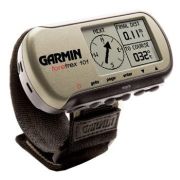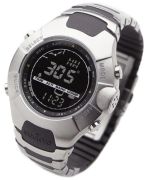 One of the most useful tools you can carry around is a knife. But not too far in running would be pliers. And pliers are exactly the main selling point of the Leatherman Wave. This 100% stainless steel multi-tool has long-nose pliers that you can access by simply opening the handle. The grip edges are rounded for a comfortable grip which fixes a problem with earlier Leatherman models. In addition, it has 4 locking blades that are accessible without having to open the handle: A plain-edge clip-point blade, a serrated sheepsfoot blade, a wood saw, and a metal saw with nail and metal files on each side. These blades have liner locks to prevent inadvertent closing. Inside the handle you get a few more goodies: a Philips screwdriver, a can/bottle opener, scissors, and 4(!) flat screwdrivers of various sizes. My only complaint is that the Wave seems to have overly many flat screwdrivers. Replacing on of those with maybe a smaller Philips screwdriver would have been better. But I guess you can get the separately available tool adapter which gives you a few more screwdrivers. All in all, it’s a neat little package. It may be a bit heavy and big for pocket carry, so you will most probably be using the included belt-mountable sheath.
One of the most useful tools you can carry around is a knife. But not too far in running would be pliers. And pliers are exactly the main selling point of the Leatherman Wave. This 100% stainless steel multi-tool has long-nose pliers that you can access by simply opening the handle. The grip edges are rounded for a comfortable grip which fixes a problem with earlier Leatherman models. In addition, it has 4 locking blades that are accessible without having to open the handle: A plain-edge clip-point blade, a serrated sheepsfoot blade, a wood saw, and a metal saw with nail and metal files on each side. These blades have liner locks to prevent inadvertent closing. Inside the handle you get a few more goodies: a Philips screwdriver, a can/bottle opener, scissors, and 4(!) flat screwdrivers of various sizes. My only complaint is that the Wave seems to have overly many flat screwdrivers. Replacing on of those with maybe a smaller Philips screwdriver would have been better. But I guess you can get the separately available tool adapter which gives you a few more screwdrivers. All in all, it’s a neat little package. It may be a bit heavy and big for pocket carry, so you will most probably be using the included belt-mountable sheath.
Rating: 5/5
 I was able to test the
I was able to test the  I’ve had my
I’ve had my